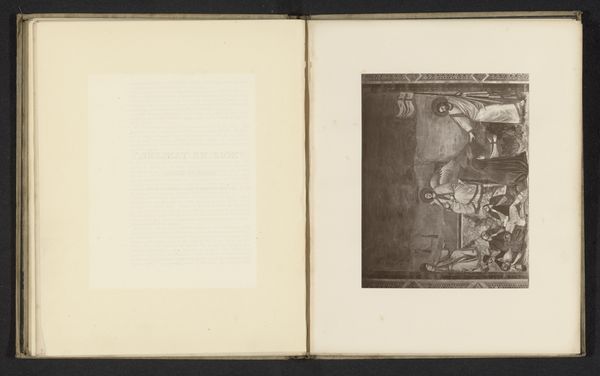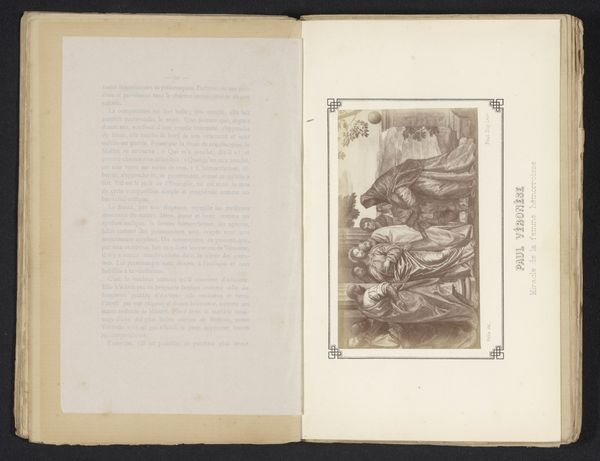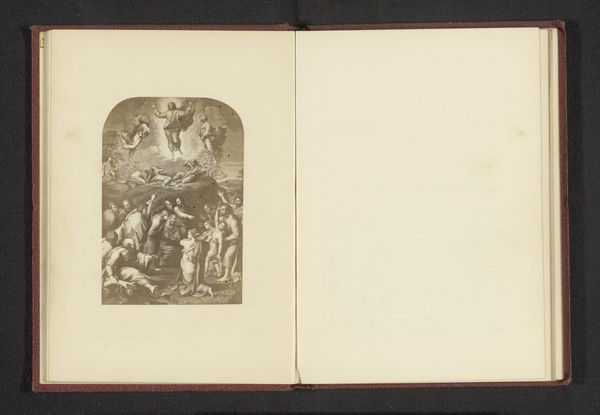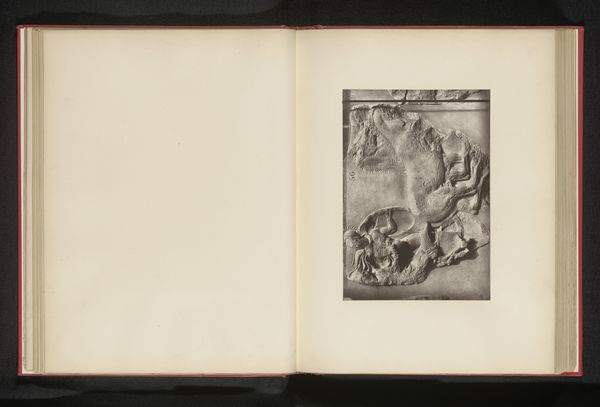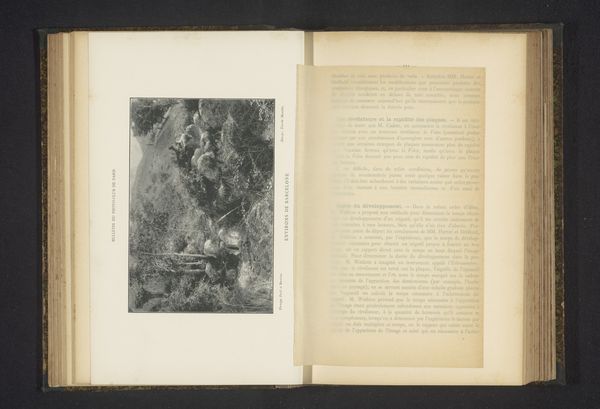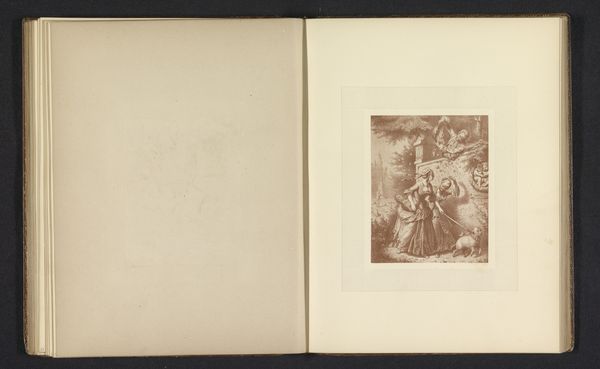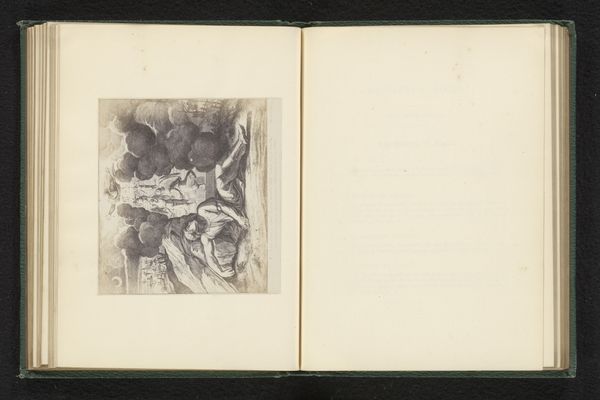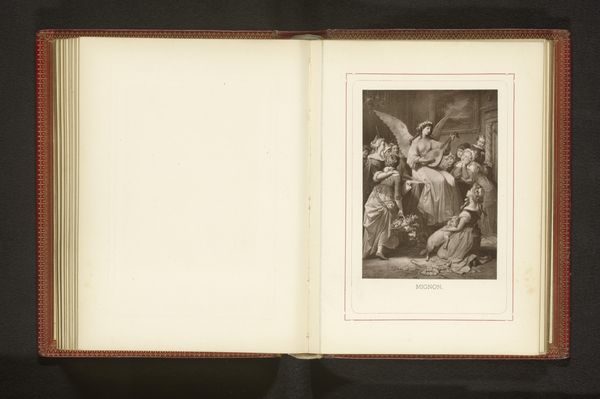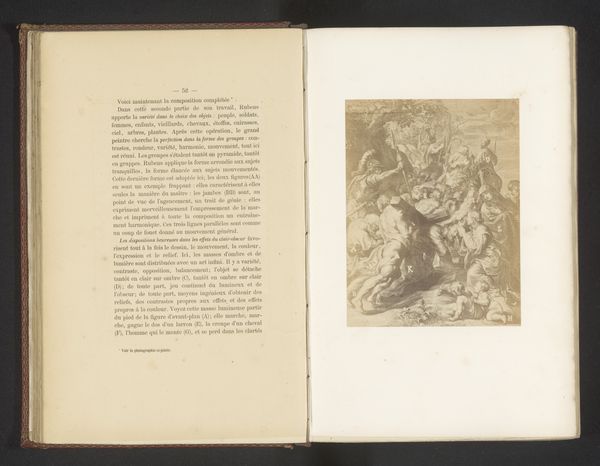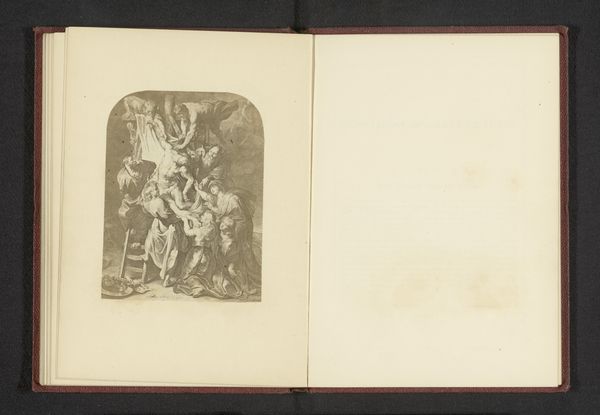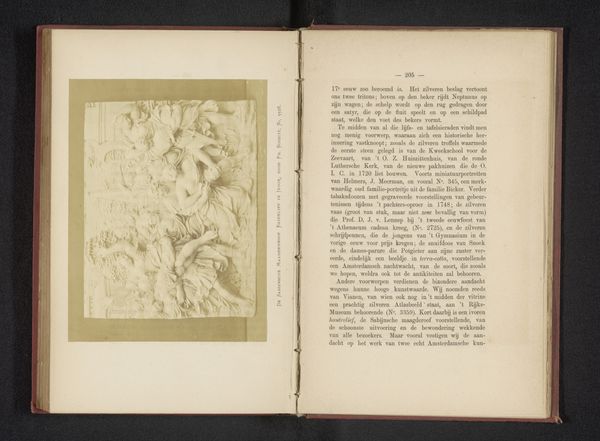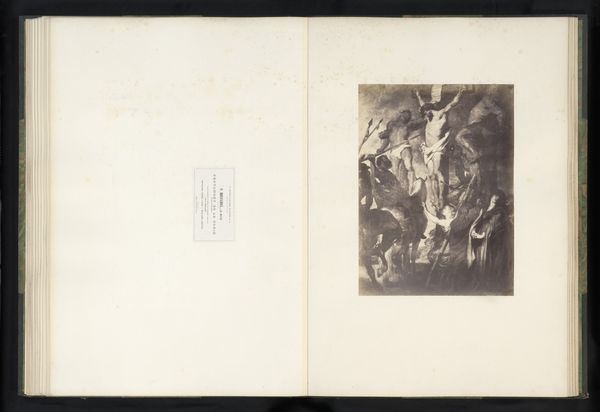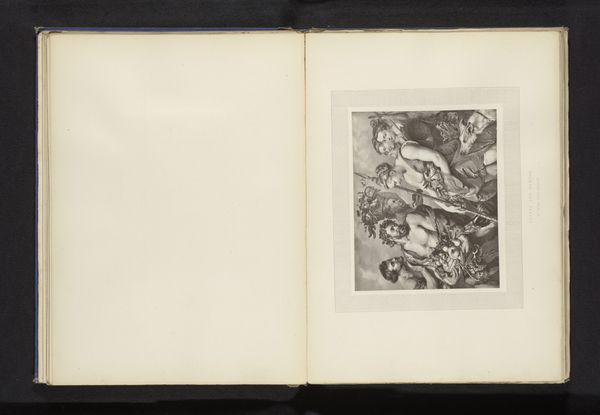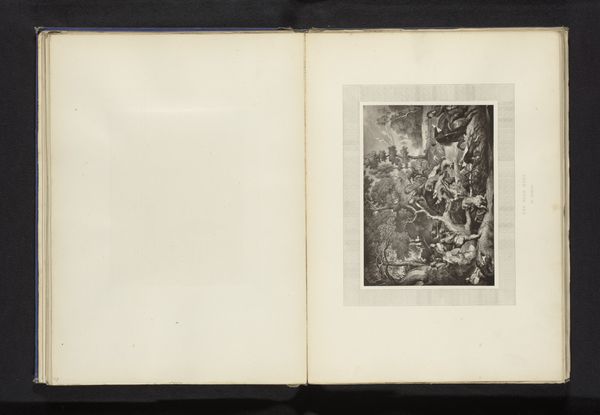
drawing, print, fresco, engraving
#
drawing
#
narrative-art
# print
#
landscape
#
figuration
#
fresco
#
11_renaissance
#
italian-renaissance
#
engraving
#
monochrome
Dimensions: height 121 mm, width 152 mm
Copyright: Rijks Museum: Open Domain
Curator: This photographic reproduction captures a fresco depicting the Lamentation of Christ, dating from before 1880. The original would have been a much grander scale; what's your initial reaction? Editor: Somber, undoubtedly. Even in monochrome, the dense composition and downward gazes funnel my attention toward the lifeless body. It’s emotionally heavy. Curator: Indeed. Lamentation scenes such as this one reflect a long history of devotional practice, where viewers were meant to viscerally connect with Christ's suffering and, by extension, the suffering of humanity. Think of it in the context of the time, class, poverty, and disease in the world. Editor: And look at the figures surrounding him: a visual language of grief. The women, Mary Magdalene perhaps among them, cluster at Christ's feet, mirroring poses of anguish found throughout centuries of art and spiritual expression. The symbols repeat; they build power. Curator: Precisely, it’s a coded language of grief and loss. But what I find truly compelling is how the fresco—now represented by this photographic reproduction—situates the body within a nexus of mourning that transcends gender and perhaps class, speaking to universal experiences of grief, regardless of when this piece was copied. Editor: There are also those hovering, almost childlike angels surrounding the central group. They seem untroubled, in a strange disconnect to the central group, what are your thoughts on that? Curator: That to me, creates a juxtaposition. This allows for commentary on innocence, while contrasting with the knowledge of grief, loss and pain on earth. Editor: The monochrome is deceiving; in viewing the image, one may miss this juxtaposition all together! Curator: You're right, this engraving, and the missing color elements make it even more important to observe and question why artists in general use familiar cultural language to reflect society back on itself, which gives the viewer an opportunity to question these interactions. Editor: What strikes me now is the fresco and this photographic reproduction really represents the endurance of visual motifs; how they resurface across time periods and serve as touchstones for collective understanding. Curator: Yes, whether its grief, joy, innocence or pain, this artwork helps me to analyze continuity and how that influences our lives now. Editor: And for me, it reveals how the language of sorrow and devotion are timeless and deeply embedded within our cultural memory, both individually and collectively.
Comments
No comments
Be the first to comment and join the conversation on the ultimate creative platform.
